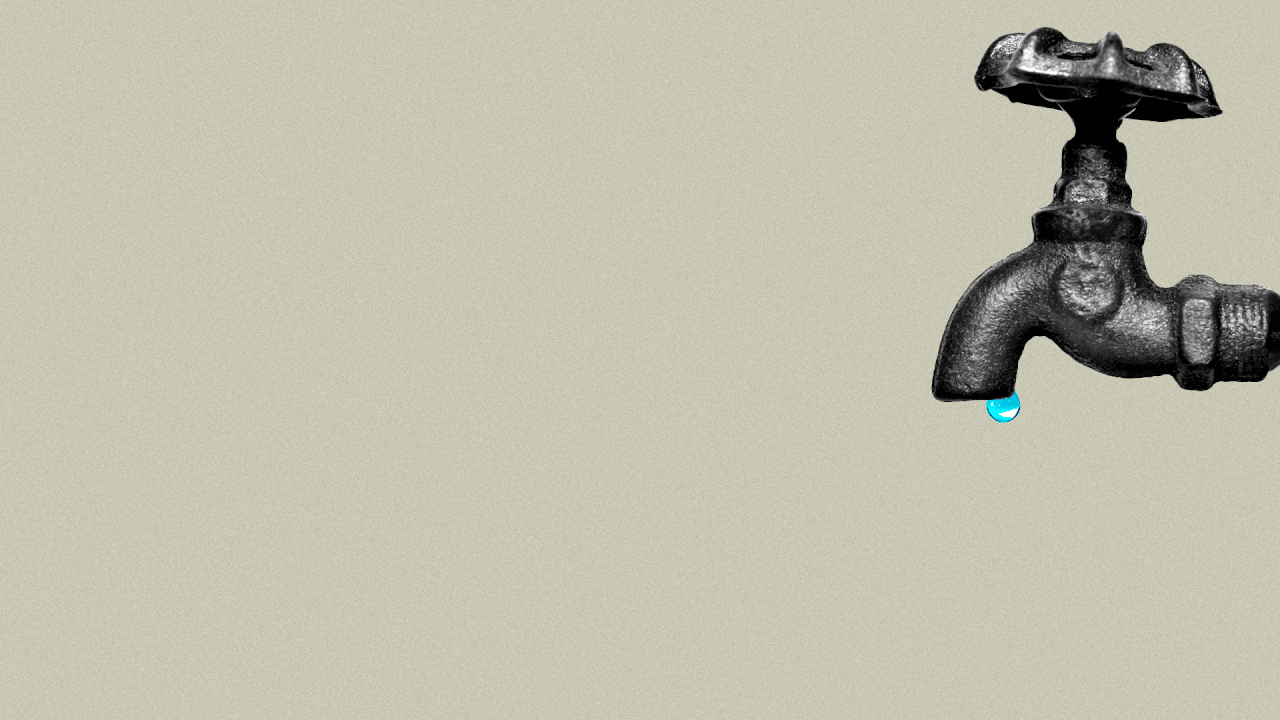A "forever" drought takes shape in the West

The Southwest U.S. is mired in an ever-worsening drought, one that has left deer starving in Hawaii, turned parts of the Rio Grande into a wading pool, and set a record in Colorado for the most days of "exceptional drought."
Why it matters: These conditions may be the new normal rather than an exception, water experts say, as climate change runs its course. And worsening drought will intensify political and legal battles over water — with dire consequences for poor communities.
Where it stands: The U.S. Drought Monitor — the nation's official tally — shows Utah, Arizona, Colorado and New Mexico mired in "exceptional drought." This type of drought is only supposed to happen every 50 years, but it's now a regular occurrence.
- Even if rain and snow arrive this January, February and March, parched soil and vegetation will slurp it up, leaving less for riverbeds.
- An ongoing "snow drought" is delivering fewer flakes, which means there'll be less snowpack to melt into Western watersheds this spring.
- Officials are bracing for what could be an unusually devastating wildfire season — the second in a row — and farmers are scrambling to ensure they can irrigate their crops.
"The word 'drought' can be a little misleading if we use it to imply we're here temporarily," John Fleck, director of the University of New Mexico's Water Resources Program, tells Axios. "We've been here 'temporarily' for 20 years now, with a preponderance of dry years and only a few wet years sprinkled in."
How it works: Conditions were dry heading into last summer, when the annual Southwest monsoon — which runs from June to September — was supposed to bring much-needed rains.
- But the 2020 monsoon failed to materialize — some called it a "non-soon."
- And fall and early winter have seen less-than-average precipitation.
- La Niña conditions — which suppress rainfall — strengthened in October and are expected to continue.
"Even when the rains return, the temperatures are not going to go back to what they used to be," Daniel Swain, a U.C.L.A. climate scientist, tells Axios. "The overall scarcity problem, especially in the West, is not going away."
- That will lead to ever-larger battles among states and localities over water rights and access, which have been a hallmark of Western politics for centuries.
- It will also mean that low-income communities like Porterville, Calif. — which famously ran out of running water in 2014 — will suffer disproportionately.
Between the lines: Even if cities and states imposed draconian water restrictions, it wouldn't make much difference.
- Agriculture consumes much more water than households, so the water we use to wash our cars or run our dishwashers is a metaphorical drop in the bucket.
- Water inequity means that "Phoenix and L.A. are not going to run out of water, but if you’re on a remote part of the Navajo Nation, you very well may," Swain says.
- A study published last April in the journal Science concluded that "global warming has pushed what would have been a moderate drought in southwestern North America into megadrought territory."
Flashback: On April 1, 2015, then-governor Jerry Brown of California declared the state's first mandatory water restrictions.
- That period of drought had people "shower-shaming" one another, ripping out green lawns to plant succulents, villainizing almond growers, and competing to drill ever-deeper wells.
The bottom line: There's still time for conditions to improve — which meteorologists hope for, but don't anticipate. "Even if it were very wet in the next few months, most of the interior West would still be in a severe drought," Karl Wetlaufer, a hydrologist with the USDA's snow survey program in Colorado, tells Axios.
- "A likelier outcome is that the situation gets worse."